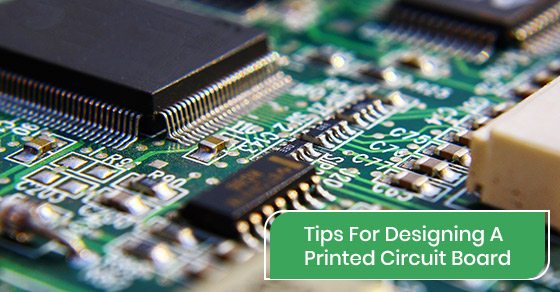Tips For Designing A Printed Circuit Board
Computer manufacturing and designing circuit boards go hand in hand. Computers would not function without circuit boards, so they are an integral part of computer manufacturing. Many Internet of things devices still use printed circuit boards, despite advances in the industry.
Larger components are easier to work with when working in an environment that is not factory based. The average designer will find it easier to work with a larger printed circuit board (PCB) because of the additional space and freedom.
Here, we will look at circuit board design in Toronto and provide tips on building a PCB.
Start with Schematics
Trying to design a printed circuit board with some paper and pencils is not advised. While some genius designers have been able to do so, it will likely cost you quite a bit of time and effort. Begin by downloading or installing a printed circuit board software.
You will then need to use the software to start building schematics for your printed circuit board. Take the time to work with your newfound tool until you become skilled in its use. There are some free software tools that you can use, although they will be limited in terms of their features.
Many will also have trial periods that you will need to adhere to. So, if you can, spend the money to get a quality piece of technology with which to work.
Become Familiar with the Necessary Guidelines
All electronic products that are currently sold will use specific processes and formulas in order to get up and running. Regarding printed circuit boards, they adhere to the same basic principles. If you are a printed circuit board designer, then you are essentially a digital artist of sorts.
After all, you are responsible for the painting and drawing of small circuits that uphold the functionality of the final “piece de resistance.” So, once you have decided on a printed circuit board design application, you will then need to focus on the science of the PCB artwork.
Becoming familiar with the guidelines may take some time, particularly when dealing with the subtle nuances of the art form. However, if you cannot grasp the fundamentals, then you will be unable to uphold the core functionality of the finalized device.
Follow Several Layouts
It is one thing to read the necessary guidelines for printed circuit board design. However, you need to (eventually) go above and beyond the fundamentals to get some hands-on experience.
The good news is that doing so is not very difficult. For example, you can recreate printed circuit board layouts that you find online. Many are quite basic, so even a newcomer will be able to experiment with them without feeling intimidated or overwhelmed.
Once you have mastered the replication of existing printed circuit boards, the next step is to start tinkering with them via a few modifications. While seemingly minor, you will eventually be able to make enough changes so that the end product is an original one.
Or, your knowledge pool may become so deep that you will be able to formulate an entirely novel concept in due time. However, the first step towards mastery is to follow several layouts in order to learn the fundamentals of board design and operations.
Refine the Design
At this point, you should have a solid prototype to work with. Now comes the refining process, whereby you will need to make some revisions to your printed circuit board to iron out the kinks.
Even the best designers will need to go back to the drawing board to make some changes, so this is not something that you should be worried about.
We would strongly suggest that you buy several circuit boards, as mistakes are common when working with this technology. The creative process involves a lot of trial and error, so be prepared to go through several boards before creating your masterpiece.
The beta to alpha process may take several weeks or months, depending on your skill level, project complexity, and budget. Just remember that all hardware and software inventions begin at the beta level, so be prepared for many revisions.
Slow and Steady Wins the Race
In summary, the steps outlined above will help you get started on the right track. However, it is important to note that Rome wasn’t built in a day. Take the time to learn the subtleties, nuances, and intricacies of the printed circuit board process.
Trying to sprint while running a marathon will cause several issues if you are reckless. For example, there may be many inefficiencies and faults that you may fail to understand if you rush into things.
A working printed circuit board is just the first step of many. In fact, one can argue that there is no real final step. For instance, you may go through 5, 6, or a dozen revisions of a printed circuit board, as redesigning new versions over time is actually quite common.
The Circuits Central Difference
We hope we have provided you with the fundamentals of circuit board design in this blog. If you would like to learn more about circuit board design, then please visit our new website.
Designing new hardware can be very intimidating for a newcomer, but it can be quite easy when you decide to work with a reliable and qualified team. At Circuits Central, we have the work ethic required to coordinate with hardware designers in order to produce production-ready prototypes.
We also use the most advanced technology in the industry to provide our clients with cutting-edge tools and resources.
We are a full-service pre-manufacturing, manufacturing, and post-manufacturing company from electronic circuit design and manufacturing to testing and conformal coating. Please contact us at 888-821-7746 if you have any questions about our products and services.

